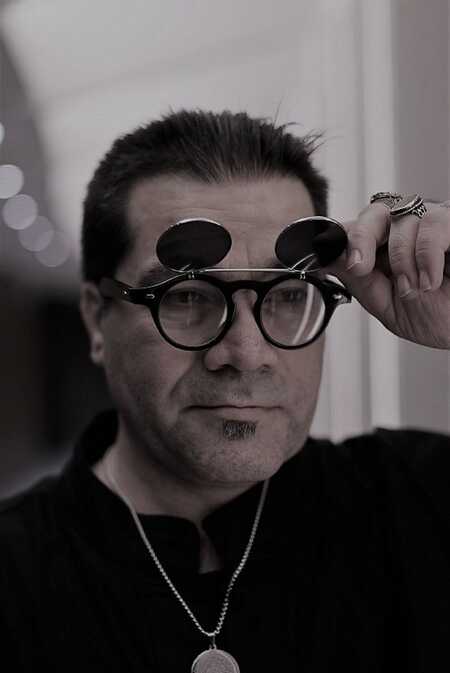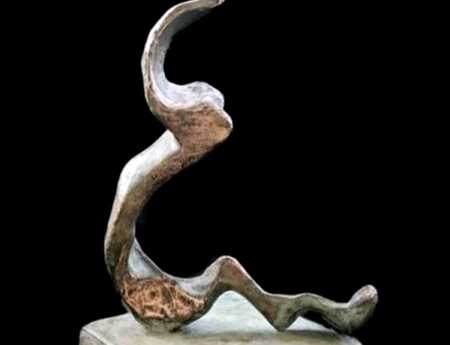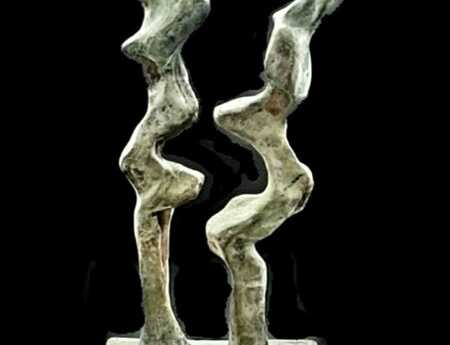
Großbritannien
My base technique to create artworks is using real life natural events to create artworks with images or words from an imaginary world. Throughout my art I clearly elaborated the disposition (changing the shape of an object), and morphing of objects. I have long been intrigued and fascinated by these concepts. In my sculptures and painting, both figurative and abstract, I employ these aspects of a collective unconscious to evoke an emotional state within the viewer. In my figurative work, my goal is to capture the myriad changing state of the human condition through subtle changes in facial countenance and body language. The end result shows how the inner condition is expressed by the outward form while also conveying a timeless quality to human emotion. In my abstract sculptures, I have recreated the numinous quality of subconsciously shared images, stories, and ceremonial rites. The sculptures, themselves, are composed of abstract forms that are covered with a rich, textured surface. The end result is a complex organic piece that evokes a sense of ancient artefacts, of ritualistic objects from some unknown culture, or of imagined landscapes.
However, my ultimate goal is to have the viewer feel a sense of familiarity with the work...a sense of having experienced this before. I believe this feeling of arises from both the collective unconscious and a mystical centre we all share...
AZIZ ANZABI:From politics to poetics.Between tradition and modernity: tapping into memorial exploration to nourish collective consciousness.By placing interiority and personal experience at the service of political awareness, Aziz Anzabi relentlessly questions the means we have to rethink the world in order to relieve sentiments of suffering.
Experiencing Iran / Iraq War at an early age, Aziz Anzabi's encounters with iconic figures of Iranian contemporary art such as Bahman Moasses or modern poet Sohrab Sepehri radically impacted his vision. Embodying concepts of exile and oppression, Aziz Anzabi explores novel paths into the idea of free speech, shaping psychic surrealisms to awaken consciences to the violence of our over-standardized world.
“I want to mix tradition into contemporary art because I think that Qajar art is the only style that is solely Iranian, with its own unique framework and techniques”.
Navigating abstraction and figuration his works evokes a symbolic grammar, both biographical and collective. Anzabi's fantasized landscapes - his moving humans, his uncertain and distorted forms - are so personal that they become universal. They are in no way free from technology, quite the contrary: they would not exist without it. By borrowing from the ancestral Qajar tradition, Aziz Anzabi becomes both craftsman and alchemist. This clever mix of technical requirements linked to an approach of memory nourished by loss, gives life to powerful works : unconscious testimonies, timeless sequences questioning our immediate future.
Aziz Anzabi is a fully committed lucid embodiment of a new form of violent poetic activism.
However, my ultimate goal is to have the viewer feel a sense of familiarity with the work...a sense of having experienced this before. I believe this feeling of arises from both the collective unconscious and a mystical centre we all share...
AZIZ ANZABI:From politics to poetics.Between tradition and modernity: tapping into memorial exploration to nourish collective consciousness.By placing interiority and personal experience at the service of political awareness, Aziz Anzabi relentlessly questions the means we have to rethink the world in order to relieve sentiments of suffering.
Experiencing Iran / Iraq War at an early age, Aziz Anzabi's encounters with iconic figures of Iranian contemporary art such as Bahman Moasses or modern poet Sohrab Sepehri radically impacted his vision. Embodying concepts of exile and oppression, Aziz Anzabi explores novel paths into the idea of free speech, shaping psychic surrealisms to awaken consciences to the violence of our over-standardized world.
“I want to mix tradition into contemporary art because I think that Qajar art is the only style that is solely Iranian, with its own unique framework and techniques”.
Navigating abstraction and figuration his works evokes a symbolic grammar, both biographical and collective. Anzabi's fantasized landscapes - his moving humans, his uncertain and distorted forms - are so personal that they become universal. They are in no way free from technology, quite the contrary: they would not exist without it. By borrowing from the ancestral Qajar tradition, Aziz Anzabi becomes both craftsman and alchemist. This clever mix of technical requirements linked to an approach of memory nourished by loss, gives life to powerful works : unconscious testimonies, timeless sequences questioning our immediate future.
Aziz Anzabi is a fully committed lucid embodiment of a new form of violent poetic activism.


